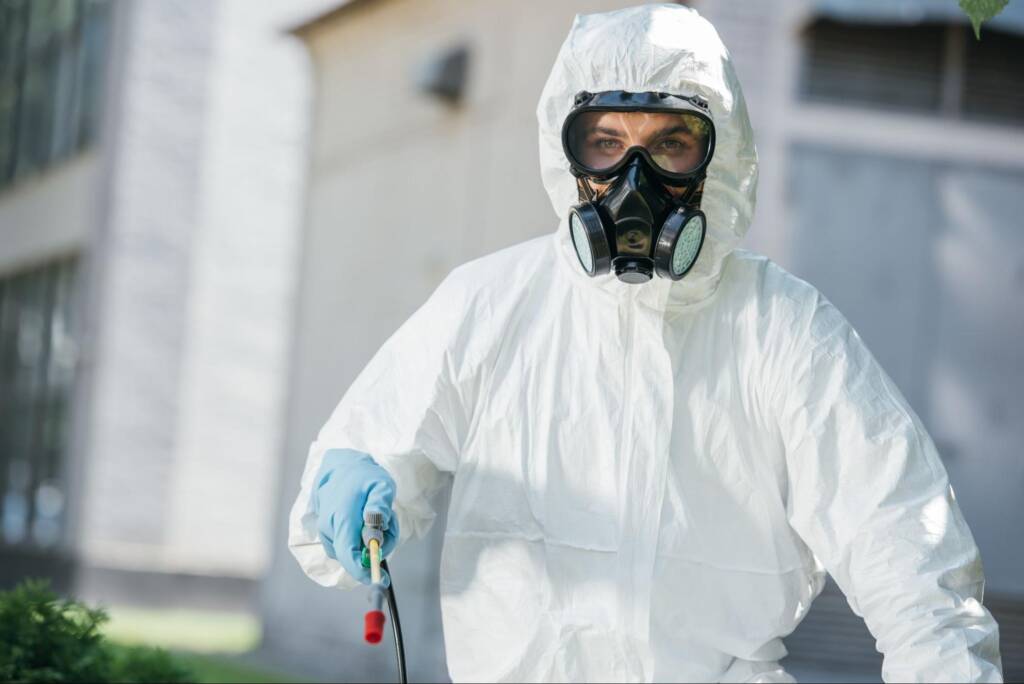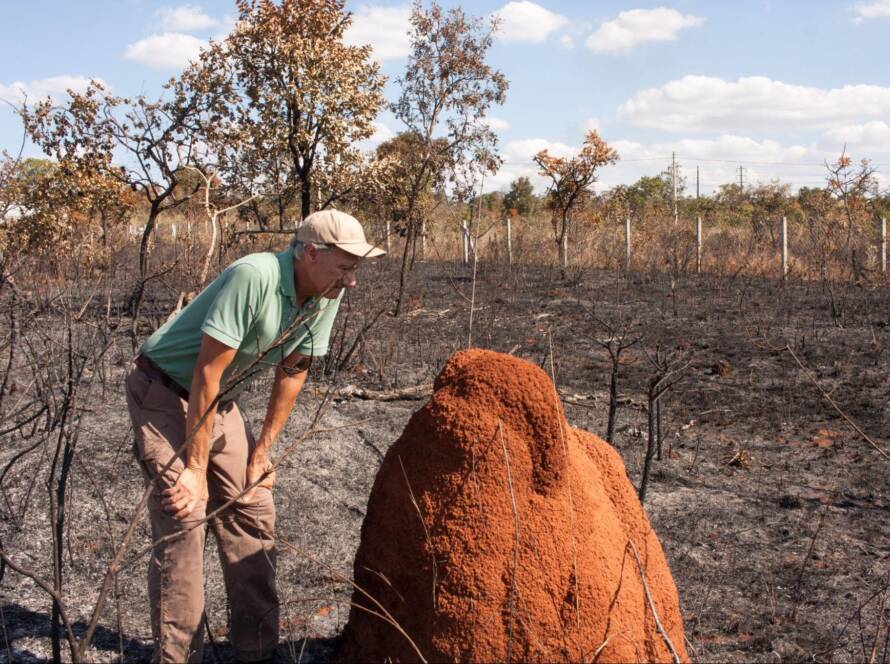Termite control is essential for protecting your property from costly damage. These pests can silently invade and weaken the structure of buildings, often going unnoticed until the damage is severe. Preventing termites before they establish colonies is the best way to avoid expensive repairs. By taking proactive steps, such as moisture control, regular inspections, and using termite-resistant materials, you can significantly reduce the risk of infestation and protect your investment.
How to Prevent Termites and Protect Your Property
Termites are silent destroyers that can compromise your home’s or building’s integrity without warning signs. By the time damage is visible, the repair costs can be substantial. That’s why preventing termites before they establish a presence is not just smart—it’s essential. With proactive strategies, regular inspections, and the proper knowledge, you can avoid the stress and expense of a full-blown infestation and protect one of your most valuable investments: your property.
Understand How Termites Damage Structures
Termites feed on wood and cellulose materials, gradually weakening key structural components like beams, flooring, and walls. Over time, this can cause severe deterioration that threatens the safety and value of your property. Because termites often remain hidden, damage can go unnoticed until it becomes extensive, making early prevention your strongest line of defense.
Invest in Prevention to Avoid Expensive Treatments
Eliminating a termite infestation can require extensive chemical treatments, fumigation, and structural repairs. Professional pest control services may also be needed, which drives costs even higher. Preventative efforts such as soil treatments, moisture control, and barrier systems are far more cost-effective. A small investment in prevention can save thousands later in repairs and remediation.
Watch for Early Warning Signs Before it’s Too Late
The sooner termite activity is spotted, the easier and less expensive it is to manage. Subtle warning signs—like discarded wings, hollow-sounding wood, or mud tubes—can be easy to miss without regular inspections. By scheduling professional checks or knowing what to look for, you can catch early infestations before they spread. Swift action reduces damage and disruption.
Protect Property Value Through Proactive Prevention
Your home or property is one of your most significant financial assets. Termite damage not only compromises safety but can also lower resale value. Preventive maintenance protects the physical integrity of your home and preserves its market appeal. Taking the proper steps now ensures your property remains strong, secure, and valuable for years.
Prevent Termites by Spotting the Early Signs
Termites often go unnoticed until significant damage has been done, making early detection crucial for preventing infestations. Recognizing the signs of termites early can address the issue promptly before it becomes severe. Awareness of the subtle indicators of termite activity around your property is essential. Identifying these signs can save you from costly repairs and protect your property’s structural integrity:
Visible Damage to Wood
Termites are known for feeding on wood, leaving behind visible damage. Over time, this feeding creates hollowed-out areas, often visible as small holes or grooves. The damage may also cause the wood to feel soft or brittle to the touch. Identifying these changes in wood texture and appearance early can help prevent further damage from spreading.
Mud Tubes on Walls or Foundations
Mud tubes are one of the most common signs of termite infestation. Made from dirt and termite saliva, they provide a protective shelter for termites traveling between their colony and food sources. Mud tubes are often found along the foundation, walls, or basements. Noticing these tubes early allows for quick intervention before termites reach critical areas.
Swarming Termites
Termite swarming is a clear indication of an active infestation. Swarms usually occur in the spring and are a sign that the colony has matured and is searching for new places to establish new colonies. You may spot flying termites near windows, doors, or light sources. This event is an urgent signal to take action, as swarming termites can quickly lead to further infestations.
Piles of Wings
After swarming, termites shed their wings, which often accumulate near windows, doors, or other entry points. If you find piles of discarded wings around your property, it’s an indicator that termites have recently swarmed and are likely setting up new colonies nearby. Identifying these piles promptly can help you detect an infestation early, allowing you to take preventive measures before the problem worsens.

Prevent Termites by Maintaining a Dry Environment
A dry environment prevents termites, as moisture attracts these pests. Termites thrive in damp, humid conditions, making moisture control a key element of termite prevention. By addressing sources of excess moisture around your property, you can reduce the likelihood of termite infestations. Regular maintenance and awareness of moisture-prone areas can help protect your property from these destructive pests.
Fix Leaks and Address Plumbing Issues
Leaky pipes, faucets, and roofs create moisture buildup, which attracts termites to your property. Repairing these leaks promptly is crucial in preventing termites from entering your home. Even small leaks, if left unchecked, can lead to significant moisture accumulation, creating an ideal environment for termites. Ensuring your plumbing and roofing systems are in good condition helps eliminate one of the main factors that attract termites.
Ensure Proper Drainage Around the Property
Proper drainage prevents water from pooling around your property’s foundation. Standing water or poorly directed rainwater can increase humidity levels, which termites find appealing. Installing gutters, downspouts, and French drains can help direct water away from your property, preventing moisture buildup. Adequate drainage keeps the soil around your foundation dry, reducing the risk of termites.
Ventilate Crawl Spaces and Basements
Crawl spaces and basements are common areas where moisture accumulates, creating an ideal environment for termites. Proper ventilation in these areas ensures that air circulates, preventing humidity levels from rising. Installing vents or dehumidifiers can help maintain the necessary dryness to deter termites. Regularly checking these spaces for excess moisture can prevent termites from finding a foothold in your home.
Use a Vapor Barrier in Damp Areas
Installing a vapor barrier in areas like basements and crawl spaces prevents moisture from seeping into the soil. Vapor barriers block moisture movement from the ground, keeping the environment dry and less inviting to termites. This simple step can significantly reduce the risk of termite infestation, especially in areas with high humidity.
Prevent Termites by Using Termite-Resistant Materials
Using termite-resistant materials is an effective way to prevent infestations and protect your property. These materials make it harder for termites to establish a colony, reducing the risk of damage. Incorporating such materials during construction or maintenance can provide long-lasting protection:
Use Treated Wood
Treated wood is infused with preservatives that make it less attractive to termites. It is commonly used in construction, especially for framing and foundations. Using treated wood significantly reduces the risk of termite damage.
Choose Steel or Concrete
Steel and concrete are immune to termite damage, making them ideal for foundations and structural elements. These materials offer long-term protection without the need for regular treatments. Replacing wood with steel or concrete can prevent termite infestations.
Apply Termite-Resistant Coatings
Termite-resistant coatings create a barrier that repels termites. These coatings are applied to wood to prevent termites from feeding on it. They offer additional protection for wooden surfaces, especially in high-risk areas.
Use Plastic or Composite Materials
Plastic and composite materials are not attractive to termites. They can be used for siding, decking, and fencing. These materials provide termite-resistant solutions without the need for constant maintenance.
Prevent Termites by Sealing Entry Points
Sealing entry points is crucial to preventing termites from infiltrating your property. Termites can enter through even the tiniest cracks and gaps, making identifying and closing these vulnerable areas essential. Taking the time to seal these entry points can significantly reduce the risk of an infestation:
Seal Cracks and Gaps in Walls and Foundations
Cracks and gaps in walls and foundations provide easy access for termites to enter your property. Sealing these openings with caulk or sealant blocks their entry. Regularly inspect your home for gaps and repair them to keep termites out.
Install Screens on Vents and Drains
Vents and drains are common entry points for termites. Installing fine mesh screens on vents and covering drains can prevent termites from entering your property. This simple step helps ensure that these openings remain protected from infestations.
Close Gaps Around Windows and Doors
Gaps around windows and doors can serve as entry points for termites. Weatherstripping or sealing these gaps with caulking prevents termites from entering. Pay attention to areas where weatherstripping may have worn out and replace it as needed.
Use Door Sweeps and Seals
Installing door sweeps and sealing the bottom of exterior doors can block termites from entering through these standard openings. These seals create a barrier that prevents termites from accessing the interior. Regularly check and replace door sweeps to maintain adequate protection.

Prevent Termites Through Ongoing Maintenance and Monitoring
Ongoing maintenance and regular monitoring are key to preventing termite infestations. Though some DIY cases are effective, some situations require a professional to handle them, mainly when infestations occur. Even after implementing initial preventive measures, you must continue to assess your property for signs of termite activity. Consistent upkeep ensures that your property remains protected and any issues are addressed before they become more serious.
Schedule Regular Termite Inspections
Regular termite inspections help identify potential issues early before they become significant problems. Professionals can spot signs of infestation that may be difficult to detect. Scheduling inspections at least once a year helps keep your property protected.
Perform Routine Repairs and Maintenance
Addressing minor repairs promptly can prevent termites from taking advantage of vulnerable areas. Fix any leaks, cracks, or damage in your home’s structure to eliminate potential access points for termites. Consistent maintenance ensures that termites don’t find opportunities to infiltrate your property.
Monitor Moisture Levels Consistently
Termites are drawn to moisture, so it’s essential to regularly check humidity levels in your home, especially in crawl spaces and basements. Using dehumidifiers or improving ventilation in these areas helps maintain low moisture levels. Keep an eye out for leaks and drainage issues to ensure termites are not attracted to your property.
Check for Early Signs of Termite Activity
Consistently monitor for signs of termites, such as mud tubes, discarded wings, or damaged wood. Early detection allows for quicker intervention, preventing an infestation from growing. Proactively checking for signs helps protect your home and catch any termite activity before it becomes widespread.
Prevent Termites and Protect Your Home Investment
Taking proactive steps to prevent termites is crucial for safeguarding your property from costly damage. Implementing the proper measures, such as using termite-resistant materials, sealing entry points, and maintaining a dry environment, can significantly reduce the risk of infestation. Regular inspections and ongoing monitoring are key to catching any potential issues early. Making the best decision to prevent termites protects your home and ensures long-term peace of mind, saving you from future headaches and repairs.
Get essential tips on how to prevent termites by reading the Thrash Pest Control blog.


